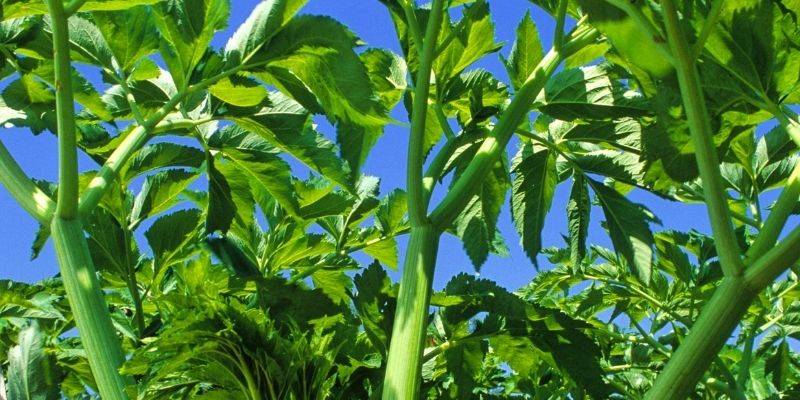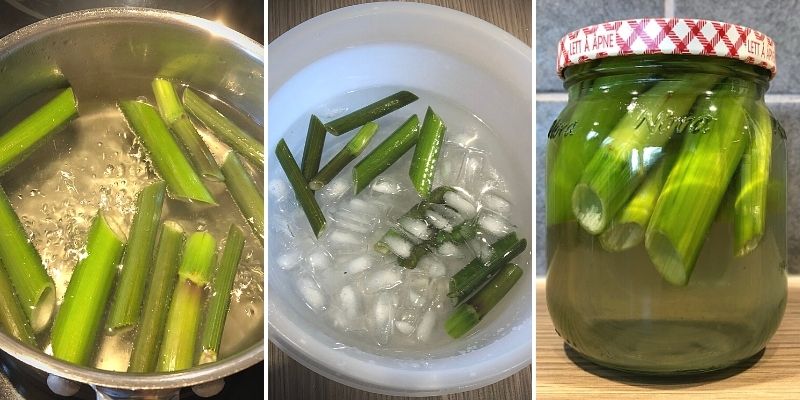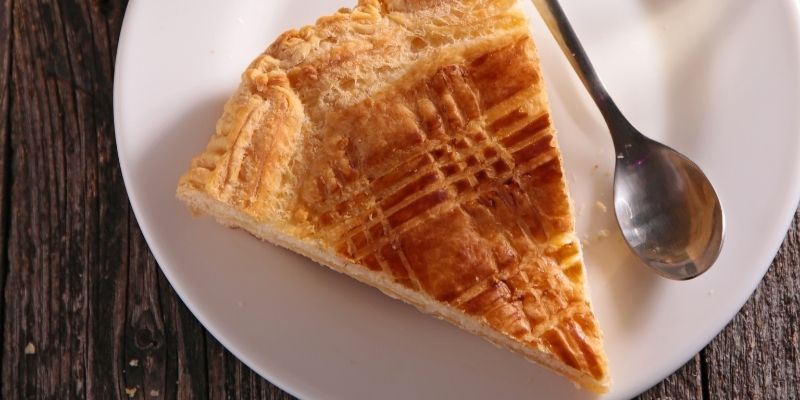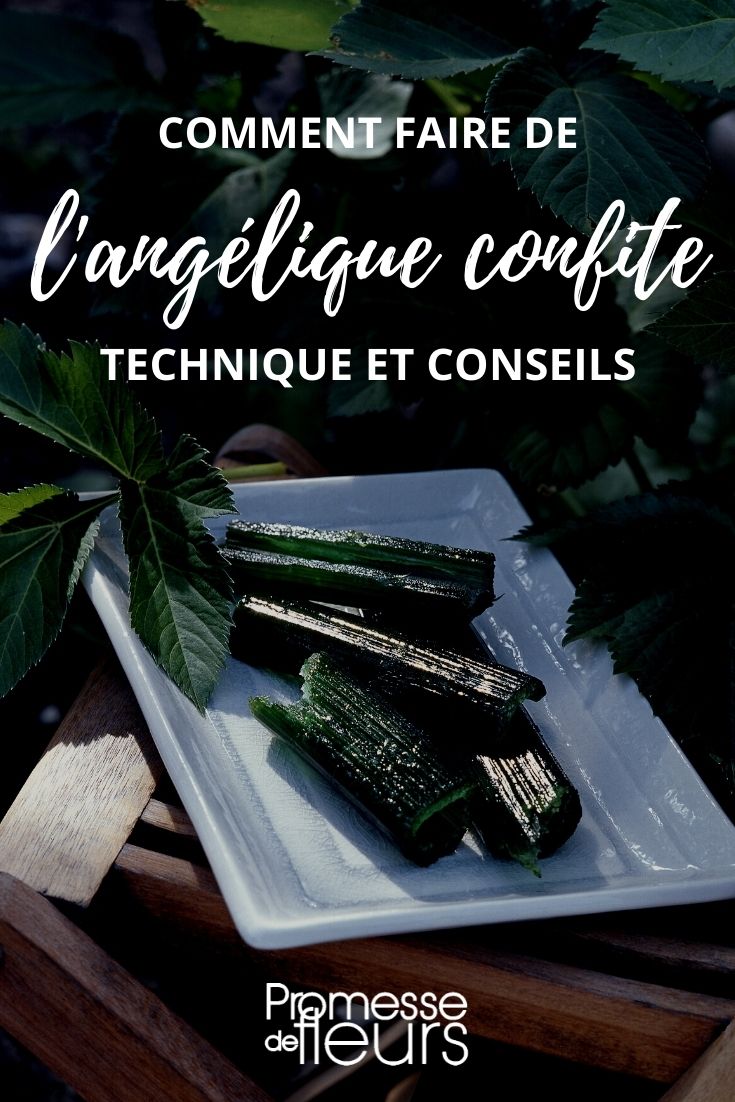The angelica, Angelica archangelica, is a plant with an enchanting name and, moreover, multiple qualities.
In the garden, it structures flower beds with its tall stems that can reach up to 2 metres in height, topped with beautiful round umbels that delight pollinating insects.
Thanks to its many properties, angelica has also been used for centuries for medicinal purposes and in cooking. While the root and seeds of the plant are primarily used for therapeutic effects, in cooking, it is the leaves and the stems that are consumed. The best example of this is candied angelica stems, a famous confectionery from Niort, whose reputation dates back to the 19th century when nuns introduced these sweets to the market, which still delight the palate of gourmands today.
Here, we will see how to make this delicacy.
When and How to Make Candied Angelica?
First, let’s look at when to harvest the angelica stems, which are the base ingredient for this recipe.
We need young stems here. They should therefore be harvested early in the season, around May. And definitely not during flowering, as they would then contain fewer nutrients (the plant concentrating all its energy into flowering) and would be more fibrous.

Angelica Stems
Recipe of Candied Angelica
Now, onto the recipe. First, arm yourself with patience, because while the recipe itself isn’t very complicated, it is, however, very long and laborious. Ready? Let’s dive in.
Make sure you have several days ahead of you. Indeed, the delicious sticks require 7 syrup baths and maceration between each. So if you’ve planned a weekend away, wait until you return to start.
Ingredients
- Angelica stems, about 15, a nice bunch in short;
- Granulated sugar, have 1 kg ready, it’s preferable, as it leaves you some margin for the different syrup baths;
- Water.
Preparation
- Remove the leaves. You can keep them to use in a soup or for cooking fish, for example;
- Then peel the stems to remove most of the fibres, as you would with rhubarb, though the process is a bit more difficult;
- Cut the stems into small sections of about ten centimetres or less, as you prefer.
Cooking
Now, onto the actual candying phase.
You may sometimes find significant differences in recipes. I prefer to start from the principle that proper candying requires multiple syrup baths.
- Start by blanching the angelica stems. These are quite fibrous, so they need to be softened, which we’ll achieve through cooking. To do this, plunge the angelica sections into boiling water, then reduce the heat and let them simmer for about 30 minutes. Then plunge them into a container filled with cold water to stop the cooking before draining them.
- In another saucepan, prepare a syrup with slightly less than two-thirds sugar to one part water, for example, 600 g of sugar for one litre of water. Add the juice of a lemon, which will help preserve the beautiful green colour of the angelica, which might otherwise brown.
- Once the sugar has dissolved, pour the boiling syrup over the angelica sticks, then cover the container and let it rest for 24 hours.
- The next day, drain the angelica and reheat the syrup, adding 50g of sugar to thicken it. Pour it boiling over the angelica pieces and let it rest again for 24 hours. Repeat this entire step for 3 consecutive days.
- On the 5th and final day (we’re almost there!), add 75g of sugar to the syrup, which you’ll briefly bring to a boil. It should now have the consistency of liquid honey. Pour it over the stems one last time and let them macerate for 48 hours.
- Drain the candied fruit one last time and let them dry on a rack. You can also dry them in the oven at a low temperature (100 °C) to speed up this step.
- That’s it! Your candied angelica sticks are ready and can be stored for many months, even years, in a cool, dry place, and especially in an airtight container.
The candied fruit will have a soft green colour, much less pronounced than the commercial version, which is achieved with colourings.
If you have any syrup left after candying, keep it. It’s packed with flavour and can, for example, be used to sweeten hot or cold drinks.

The angelica stems are blanched, then plunged into a cold water bath before macerating for 24 hours in the syrup. In the following days, proceed with several syrup baths and macerations. (photos Abuluntu - Wikimedia)
How to Use Candied Angelica Sticks?
Candied angelica is traditionally used in Charente desserts, such as the Charente galette. You can also incorporate it into a cake to replace traditional candied fruit or in other pastries.
This speciality also features in a "riz à l’impératrice", a rice pudding enhanced with Bavarian cream and candied fruit.
Finally, feel free to experiment with other recipes. Why not replace chocolate-coated orange peels with angelica? Or cut filaments to decorate various dishes? The green of angelica contrasts beautifully with the red of a fruit salad… or tomatoes. It’s up to you to explore!

Charente Galette
Which Angelica to Choose?
For candied angelica, choose the officinal angelica, Angelica archangelica, also known as true angelica. Wild angelica, on the other hand, is less flavourful. And here, what we’re after is, above all, a certain taste.
As for other angelicas, particularly ornamental varieties, they simply aren’t used.
Although the purple angelica, native to Korea, is also medicinal, its traditional use is entirely different. Here, it’s the root that’s used, and the properties are quite different. The varieties are not interchangeable.
Finally, be cautious. When harvesting young stems in April and May, take care not to confuse your angelica plant with hemlock. The mistake would be fatal.































Comments